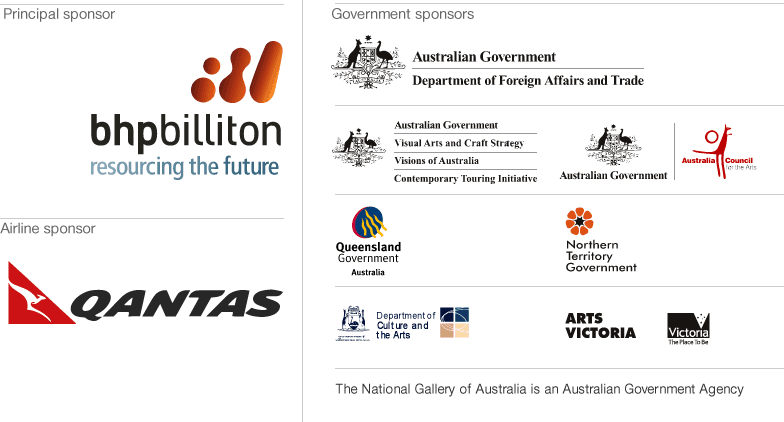

|
Introduction
Presenting the work of thirty artists from each state and territory, the triennial demonstrates the incredible range of contemporary Indigenous art practice. It is the largest survey show of Indigenous art at the Gallery in more than fifteen years, featuring up to four works by each artist created during the past three years in a variety of media, including painting on bark and canvas, sculpture, textiles, weaving, new media, photomedia, printmaking and installation. The works selected not only create an exhibition of outstanding quality but are also ultimately important acquisitions for the national collection.
Internationally, there has been incredible interest in contemporary Indigenous art from Australia, most notably with the prestigious Australian Indigenous Art Commission at the new Musée du quai Branly, Paris, in June 2006. And there can be no doubt that locally the launch of the triennial is well-timed. Not only does it open the day after the Gallery’s twenty-fifth anniversary, it also coincides with the fortieth anniversary of the 1967 Referendum (Aboriginals), whereby non-Indigenous Australians (90.77%) voted overwhelmingly to include Indigenous Australians on the census as citizens, and the fiftieth anniversary of NAIDOC (National Aboriginal and Islander Day Observance Committee). These anniversaries are a major inspiration for the exhibition’s thematic context.
To ensure that successive National Indigenous art triennials are as dynamic and as stimulating as possible the Gallery will invite an Indigenous guest curator to direct the exhibition’s theme and content. The theme of the inaugural triennial is Culture Warriors and this year’s guest curator is Brenda L Croft, Senior Curator, Aboriginal and Torres Strait Islander Art, National Gallery of Australia. The guest curator position provides an outstanding opportunity for Indigenous curators to develop skills and direct a major Australian art event.
The Gallery’s development of an Indigenous art triennial is also in light of there being fewer high-profile opportunities to showcase Australia’s leading contemporary artists, especially considering that some major forces in contemporary art such as the Moët et Chandon Fellowship and the Art Gallery of New South Wales’s biennial, Australian Perspecta, have ceased. To date, the most widely acknowledged survey of contemporary Indigenous Australian art has been the highly popular annual Telstra National Aboriginal and Torres Strait Islander Art Award, held each August at the Museum and Art Gallery of the Northern Territory, Darwin. Although it is not a theme-based or curated show, the Telstra Award features the work of more than 100 artists. What defines the National Indigenous art triennial is that it is curated, themed, and by invitation; therefore it stands as an important counterpoint to existing annual, biennial and triennial visual arts events.
Brenda L Croft
Senior Curator, Aboriginal and Torres Strait Islander Art
Exhibition opened
13 October 2007 – 10 February 2008
National Gallery of Australia, Canberra
